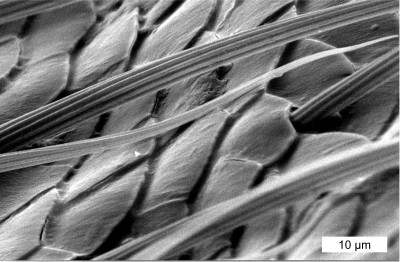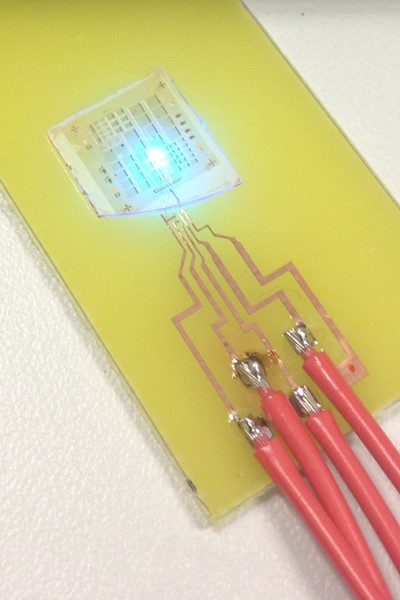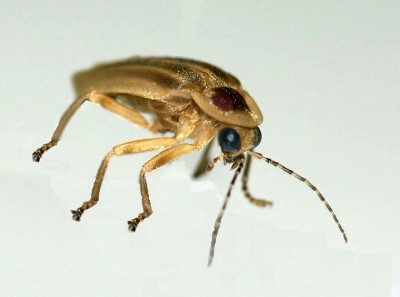Mimicking the internal structures of fireflies, researchers from Canada, France and Belgium have modified light-emitting diodes (LEDs) with an overlay that makes them significantly brighter and more efficient.
As detailed in two papers published on January 8, 2013, by the Optical Society of America (OSA) in its journal, Optics Express, the scientists examined fireflies’ lanterns—i.e. the bioluminescent organs on their abdomens that flash to attract mates—using scanning electron microscopes. This led them to identify an unexpected pattern of jagged, ‘misfit’ scales on a firefly’s lantern, which computer simulations showed would let out the most light.
Fireflies emit this light through part of their exoskeleton referred to as a cuticle. Some of the light is reflected back into the lantern, dimming its glow. The jagged scales of some fireflies’ cuticles, however, can help minimize these internal reflections, allowing more light to escape overall.
“The tips of the scales protrude and have a tilted slope, like a factory roof,” says Annick Bay, a PhD student who researches natural photonic structures at Belgium’s University of Namur.

Electron microscopes revealed the sharp edges of ‘misfit’ scales on fireflies’ lanterns that emit the most light. Image courtesy Optics Express
Nicolas André, a postdoctoral researcher at Quebec’s University of Sherbrooke, further explored how to apply these properties to LEDs. He deposited a layer of light-sensitive material on top of a standard gallium-nitride LED and then exposed sections with a laser to mimic the triangular ‘factory roof’ profile. To maximize light extraction, the dimensions of the protrusions were adjusted to a height and width of five micrometres.
Testing showed this coating increased an LED’s light extraction by roughly 55 per cent. The researchers speculated that, with achievable modifications to current manufacturing techniques, it should be possible to apply the design enhancement to LED production within a few years.
“This work shows how much we can learn by carefully observing nature,” says Bay. “What’s nice about this technique is it’s an easy process and we don’t have to create new LEDs. We can coat and laser-pattern an existing LED with a few steps.”

University of Sherbrooke researchers coated an LED with a ‘factory roof’ pattern that increased light extraction by more than 50 per cent. Photo courtesy Nicolas André
The firefly that inspired the new coating was from the genus Photuris, which is common in the U.S. and Latin America. Bay’s adviser, Jean Pol Vigneron, brought specimens from Central America to the lab in Belgium, where Bay examined them in greater detail, comparing them to other fireflies from Guadeloupe that lacked the ‘factory-roof’ structure.
“The Photuris fireflies are very effective light emitters, but I am quite sure other species are even more effective,” says Bay. “This work is not over.”
The full papers are available free online at www.opticsinfobase.org/oe.






